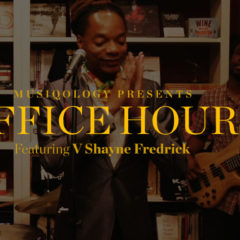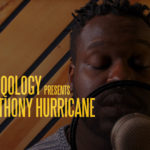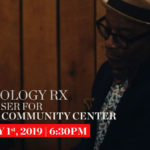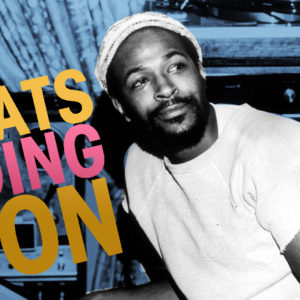Nothing New is MusiQology’s latest recurring series. Written by Penn PhD candidate Ben DuPriest, this collection of essays debates the utility and danger of proclaiming music “new” (or “old”) within a larger historical and political frame. With a focus on contemporary recordings labeled “jazz” for a variety of reasons, DuPriest unpacks the politics of that label and an ongoing debate over the utility of new-ness.
With her 2016 release, Emily’s D+Evolution, bassist-vocalist Esperanza Spalding officially and completely blasted generic convention out of the water. Under the guidance of an ambiguously defined muse named Emily, Spalding ‘d+evolved’ well beyond her previous status as jazz’s 21st century Bieber-beating great youth hope into new realms of rock, funk, and the unknown. Wildly criss-crossing an often unidentifiable assemblage of sonic markers, the album leaves Spalding (and Emily) seemingly alone in a very personal afrofuturistic galaxy, simultaneously extending her claim to the throne of jazz-youth-prodigy while leaving almost any conventional semblances of jazz style in her cosmic dust.
Spalding’s music has never been easily categorized. Each of her previous releases is unique, exploring sonic territories ranging from post-modern jazz, R&B, samba, chamber music, and beyond. Speaking about her 2006 debut album, Junjo, The New York Times’s critic Ben Ratliff noted the various ways in which she could be distinguishable amidst the jazz world: “She’s a bassist leading a band and singing wordless vocals at the same time; she has made a charming first record; she’s only 21; and she’s a she,” he wrote. Spalding’s gender is often noted, and regardless of one’s perspective on the relevance of the issue, a female-identifying bass player-bandleader is indeed statistically exceptional. It’s notable, though, that perhaps the only other well-known female bass playing jazz(ish) front-person, virtuoso-producer-colossus Meshell Ndegeocello, often looms as large as any stylistic influence in Spalding’s music, particularly on the present work.
Ratliff also points out Spalding’s age, which at the time inspired excitement and optimism for those jazz enthusiasts losing sleep over the impending doom of the genre. In 2011, this hopefulness reached a tipping point, when Spalding became the first jazz musician ever to take home the Grammy Award for Best New Artist, beating out Justin Bieber and Drake, among others. Since then, Spalding’s music has increasingly pressed against what we think of as ‘jazz,’ no doubt inspiring a sense of anxiety if not betrayal amongst purists. 2012’s aptly named Radio Music Society won the Grammy for Best Jazz Vocal Album, but was her most ‘contemporary’ work to date, moving her sound in a more radio-friendly R&B direction. Moreover, the album was the fullest realization yet of her ability to incorporate multiple musics into diverse assemblages of sound, creating in her albums veritable playing fields on which different styles contend for categorical right.
In this regard, Emily’s D+Evolution is either a logical step in a brand new direction, or an inexplicable resituating. The album’s strange title and radical musical content may posit some kind of progressive ‘devolution’ for Spalding’s musical self, or perhaps assign a “D+” grade in general musical evolution: Both theories have been floated by critics directly to the artist, who has not necessarily denied them. This ambiguous statement about progress and regression serves to brand a set of technically challenging ideas that redefine Spalding’s musical ethos, making a 21st century funk-rock-afrofuturist claim on the idea of the concept album (she seems here to be like a comrade-in-arms of Janelle Monae).
Emily plays more like a rock album than jazz, though, often evoking something akin to 70s prog. Armed with a power trio, Spalding journeys through a maze of polyrhythmic textures and poly-metric feels, propelled by virtuosic guitar and bass riffs that are more Zappa than Weather Report. But her vocal work and much of her playing remains firmly couched in the soulful-virtuosic jazz style for which she’s gained so much acclaim – more Ndegeocello than Hendrix. For the most part, though, the ‘jazz’ element in the equation is marginal, except, as Spalding has emphasized, in the musical backgrounds of her collaborators. Jazz training is a non-coincidental denominator; the music she wanted to make required the type of deft multi-musico-linguistics that can be achieved through the rigor of jazz pedagogy. She explained in a conversation with NPR music:
“It’s very nice to work with somebody who has a big dictionary or thesaurus. It’s a very rigorous ‘training program’ to become a jazz musician, you know? You come in contact with a lot of sounds, a lot of different textures and chords. And of course, if you’re listening to a current (jazz) artist and the new material that they’re making, it incorporates a lot of other ‘genres,’ other modes or pedagogies of musical vernacular… Everyone who is in the band learned the language through the ‘school of jazz,’ but are in touch with a wide array of musical dialects. There’s more to paint with; there’s more to write from.”
So, here again, new jazz (such as it is) exists in its conversation with and expression of non-jazz sounds. The track “One” represents this generic flexibility particularly well with a verse-chorus form that vacillates between Spalding’s unique soulful jazz vocality and her beefy power chords, culminating with a guitar solo that could be construed theoretically as ‘jazz,’ but with a tone and timbre more reminiscent of David Gilmour than Wes Montgomery. Elsewhere, Spalding’s sense of melody complicates this distinction further. The brief “Farewell Dolly” is a duet that Spalding takes with herself, a bit of ‘chamber jazz’ counterpoint between voice and bass guitar that could fit comfortably on some of her earlier albums, but ultimately serves as a prelude to the more texturally epic rocker “Elevate or Operate,” which it precedes.
Although the versatility of the instrumental ensemble and Spalding’s vocal stylings are certainly foregrounded, some of the most unexpected sounds come from a non-traditional approach to background vocals, used variously on tracks like “Rest in Pleasure,” “Ebony and Ivy,” and “Funk the Fear,” as syllabic instruments of percussive texture, mono-tonal textual deluge, or as some kind of tribal chant. (I wouldn’t normally use the phrase ‘tribal chant’ uncritically, but there is a good bit of ‘primitive’ and ‘tribal’ rhetoric and imagery on the album and in her promotional conversations. Hopefully someone will have time and space to explore the ‘concept’ behind the album more fully elsewhere).
In critical writing about the album, much has been made of the figure of Emily, whose name appears possessive in the title, and who seems to be something like a protagonist. It happens that Emily is Spalding’s middle name, and the name she often went by in childhood, but her identity and role with respect to the album are not so simple. Not quite an alter ego, she is something of a “spirit-cum-muse” for whom Spalding acts as an expressive conduit, serving as “arms and ears and voice and body… to say what she came to say.” Emily may or may not exist materially, but she is a sentient, affective life form, intimately connected to Spalding’s. Questioned about the album’s inspiration, Spalding has spoken nostalgically about her childhood as Emily (although not necessarily the Emily), when she was inspired by many modes of expression: theater, dance, visual art, etc. Live performances of the album reflect this, feeling more like magical realist performance art than a rock or jazz concert – here again, 70s prog rock is evoked, but through an afrofuturistic aesthetic lens.
Looking both inward and backward, Spalding has used this album to move forward and outward, a paradoxical (d)evolution of style. Quoting Wayne Shorter (with whom she has collaborated), she sums up her creative inspiration in a way that is particularly provocative for the discourse that the present series of writings pursues: “We should use the best of the past like a flashlight into the future.” Bridging the gap between the virtuosity and soulful affect that defined her early career, paying homage to childhood expressivity, and creating a whole new musical self, tinged with afrofuturism, to explore uncharted generic territory, she seems to have taken Shorter’s advice to heart.
<iframe width=”600″ height=”338″ src=”http://www.npr.org/templates/event/embeddedVideo.php?storyId=468290664&mediaId=468907852″ frameborder=”0″ scrolling=”no”></iframe>
Ben DuPriest is a dissertating Ph.D. student in Ethnomusicology at the University of Pennsylvania. His work examines the entanglement of musical pasts and presents in the American South. He is currently conducting ethnographic fieldwork and historiographic research on the blues and blues communities in North Mississippi. His project examines the idea of musical heritage, the presence of divergent historical consciousnesses, and the mobilization of these phenomena towards constructions of community and self by local and non-local people. He previously earned an MA in historical musicology and a BA in Music at the University of Georgia in Athens, Georgia, where he lived, trained, and worked as a drummer and a line cook.

 Share On Facebook
Share On Facebook Tweet It
Tweet It








